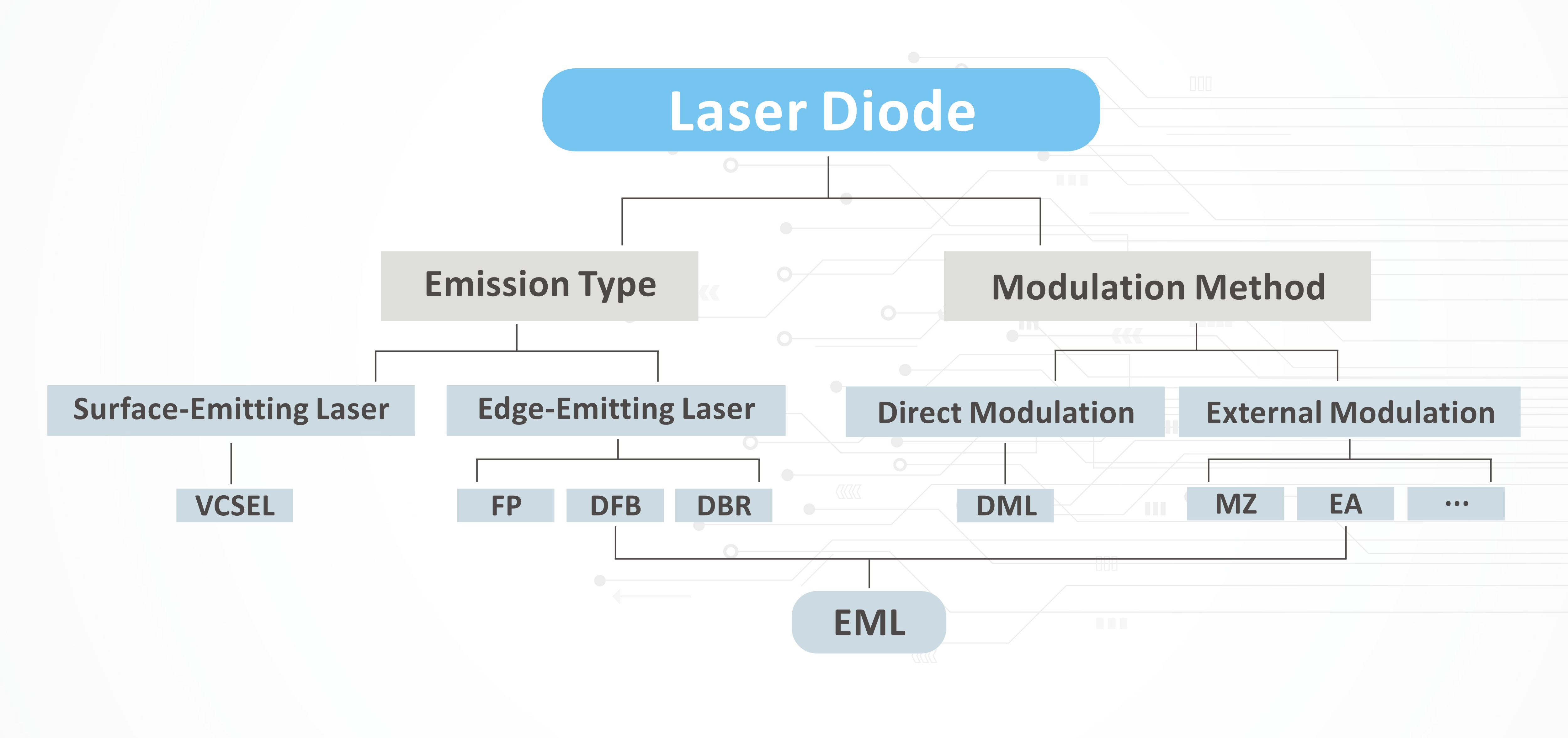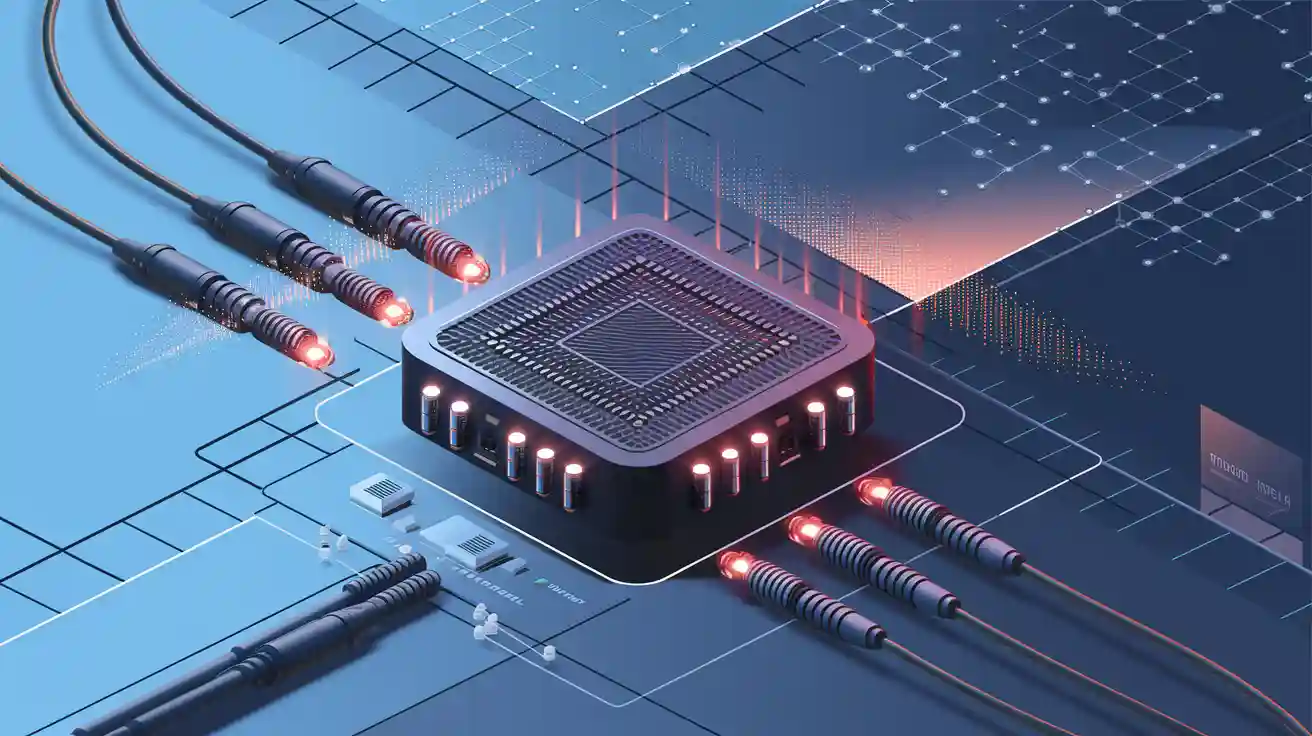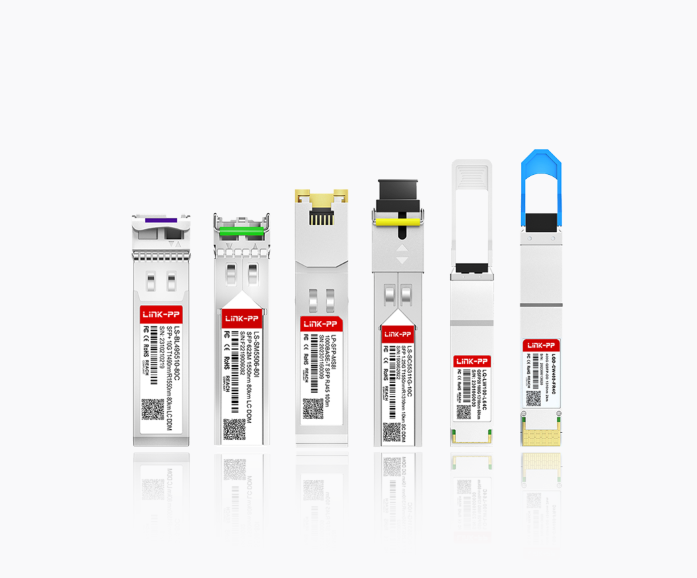Optical transceivers are critical components in modern fiber-optic communication systems, acting as the bridge between electrical and optical signals. At the heart of these devices lies the laser diode, which determines performance, efficiency, and application suitability. This article explores the types of lasers used in optical modules, their working principles, classifications, and key differences, while introducing how LINK-PP leverage these technologies.

1. What is a Laser Diode in Optical Transceivers?
A laser diode is a semiconductor device that converts electrical signals into coherent light pulses for transmission over fiber-optic cables. Unlike LEDs (Light-Emitting Diodes), laser diodes produce focused, high-intensity light with precise wavelengths, enabling high-speed data transmission over long distances. This technology is fundamental to optical transceiver modules, which are deployed in data centers, telecom networks, and enterprise infrastructures.
2. How Do Laser Diodes Work?
Laser diodes operate through stimulated emission. When electric current passes through the semiconductor material, electrons recombine with electron holes, releasing photons. These photons reflect between mirrored surfaces within the diode’s cavity, amplifying into a coherent light beam. The wavelength of this light—commonly 850nm, 1310nm, or 1550nm—depends on the material and structure of the diode.
3. Classification of Laser Diodes in Optical Modules
Optical transceivers use four primary laser types, each optimized for specific use cases:
a. VCSEL (Vertical-Cavity Surface-Emitting Laser)
Wavelength: 850nm (multimode fiber).
Applications: Short-reach, high-speed links (e.g., data center interconnects).
Advantages: Low power consumption, cost-effective.
Example: LINK-PP’s 100G QSFP28 SR4 transceivers LQ-M85100-SR4C is used for cloud infrastructure.
b. FP (Fabry-Pérot) Laser
Wavelength: 1310nm or 1550nm (single-mode fiber).
Applications: Medium-distance communication (up to 20km).
Drawbacks: Broader spectral width limits higher-speed applications.
c. DFB (Distributed Feedback) Laser
Wavelength: 1310nm or 1550nm (single-mode).
Applications: Long-haul networks (40km+), 10G-100G+ systems.
Advantages: Narrow linewidth, superior wavelength stability.
Brand Spotlight: LINK-PP integrates DFB lasers in its 400G ZR+ coherent modules for telecom networks.
d. EML (Electro-Absorption Modulated Laser)
Wavelength: 1550nm (C-band).
Applications: High-speed, long-distance DCI (Data Center Interconnect).
4. Key Differences and Selection Criteria
Parameter | FP Laser | DFB Laser | VCSEL | EML |
|---|---|---|---|---|
Wavelength | 1310 nm, 1550 nm | 1310 nm, C-band | 850 nm, 940 nm | C-band, L-band |
Transmission | ≤20 km | ≤80 km | ≤300 m (MMF) | ≤120 km |
Cost | Low | Moderate | Low | High |
Best For | LANs, PON | Metro networks | Data centers | Long-haul DWDM |
LINK-PP tailor optical transceiver solutions based on these factors. For instance, their 400G ZR+ coherent modules integrate EMLs for hyper-scale data center interconnects, while VCSEL-based transceivers serve high-density server racks.
5. Why Laser Choice Matters for Optical Transceivers
Selecting the right laser ensures alignment with network demands:
Distance: DFB/EML for long-haul vs VCSEL for short-reach.
Speed: External modulation enables terabit-scale capacity.
Cost Efficiency: FP/VCSEL lasers reduce expenses in edge networks.
In summary, understanding laser diode types is essential for optimizing network performance. Whether deploying cutting-edge EML-based transceivers or cost-effective VCSEL solutions, LINK-PP could provide reliable service.




